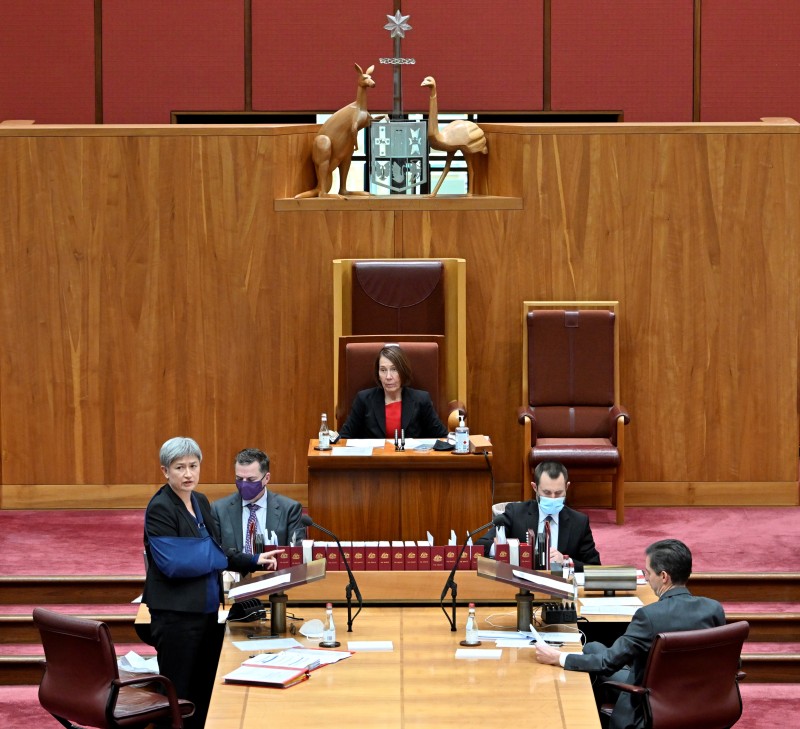What happens if the votes are tied in the House of Representatives and in the Senate?
The President of the Senate

David Foote/DPS Auspic
Description
The President of the Senate sits in a large, red chair on an elevated platform in the Senate. The President is a senator who has been picked to run the meetings in the Senate. The President’s chair faces the U-shaped seating of the other senators. From here, the President can see and hear everything that happens, and everyone in the Senate can see the President.
Permission should be sought from DPS AUSPIC for third-party or commercial uses of this image. To contact DPS AUSPIC email: auspic@aph.gov.au or phone: 02 6277 3342.
In both the Senate and House of Representatives, if a vote is tied it is a ‘no’ vote. This is because the Australian Constitution says that votes that votes shall be agreed by more than half of the members voting. Without a majority voting ‘yes’, the question is defeated.
Section 23 of the Constitution requires all senators – including the President of the Senate –to vote. This makes sure each state is equally represented. It also means a tied vote immediately fails, as the President has already voted and cannot resolve a tie.
Section 40 of the Australian Constitution says that the Speaker of the House of Representatives will only vote if there is a tie. This is called a casting vote. Traditionally, the Speaker votes ‘yes’ if the question will allow the House to continue debate but votes 'no' if the question is to make a decision or a change.